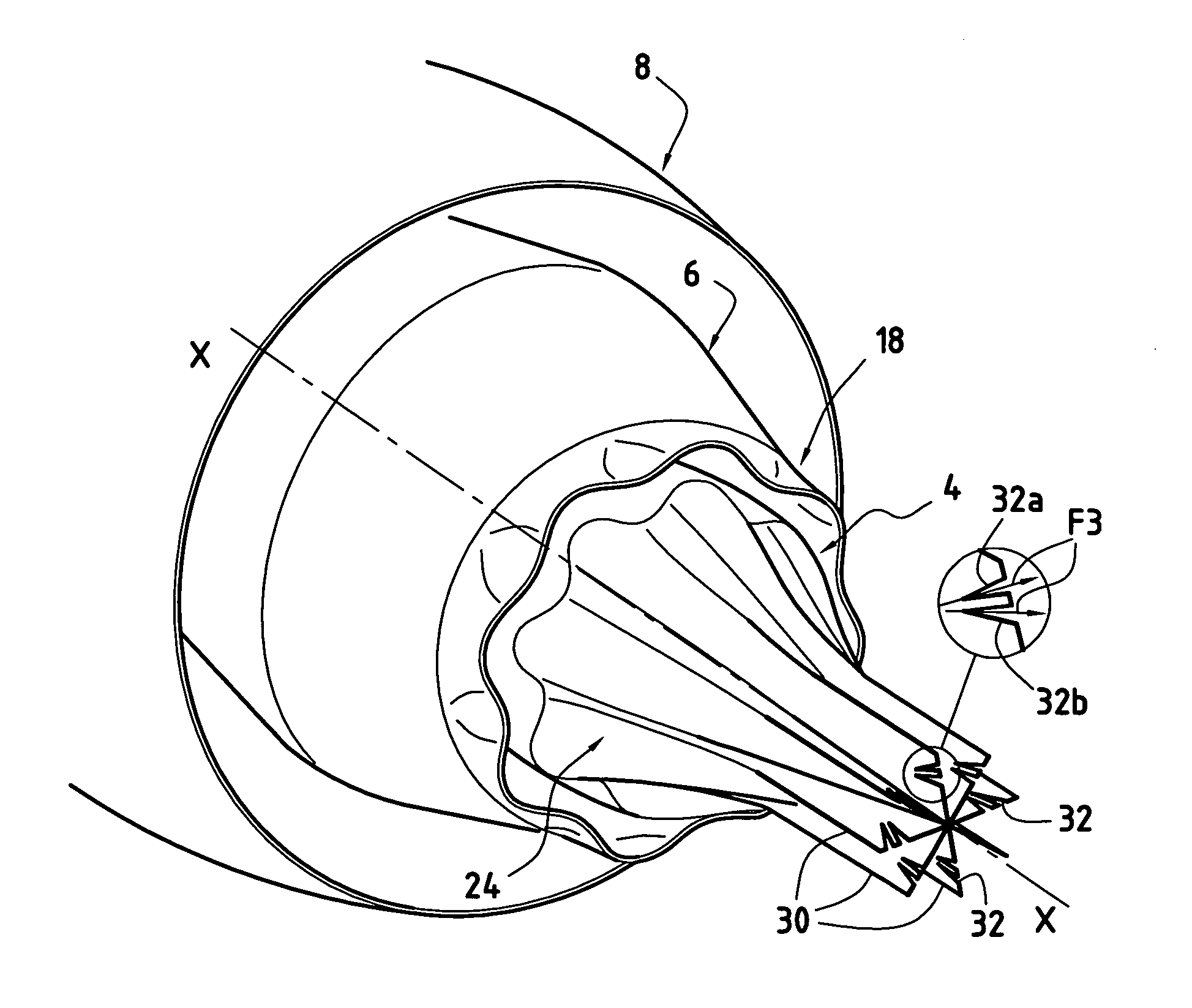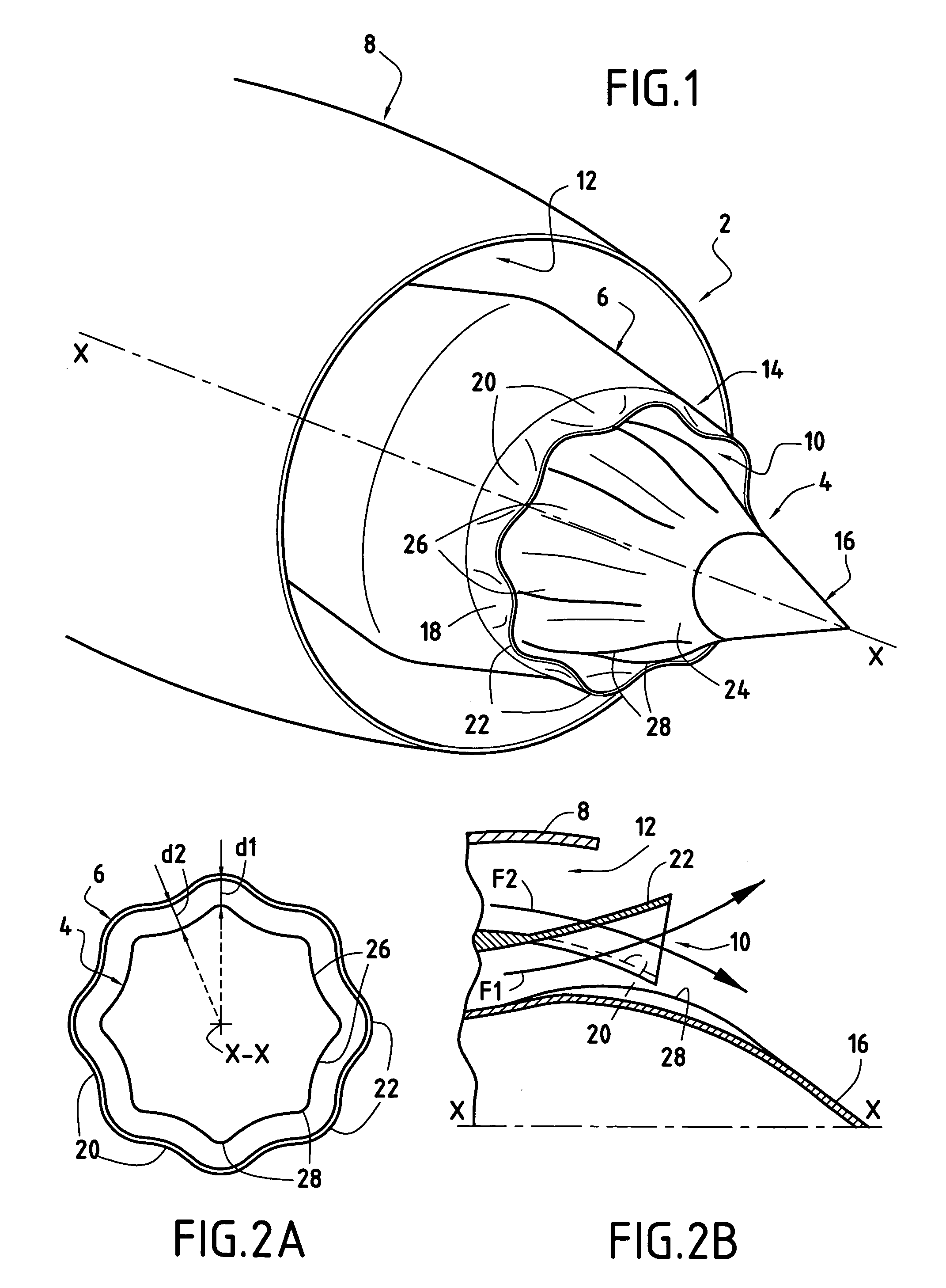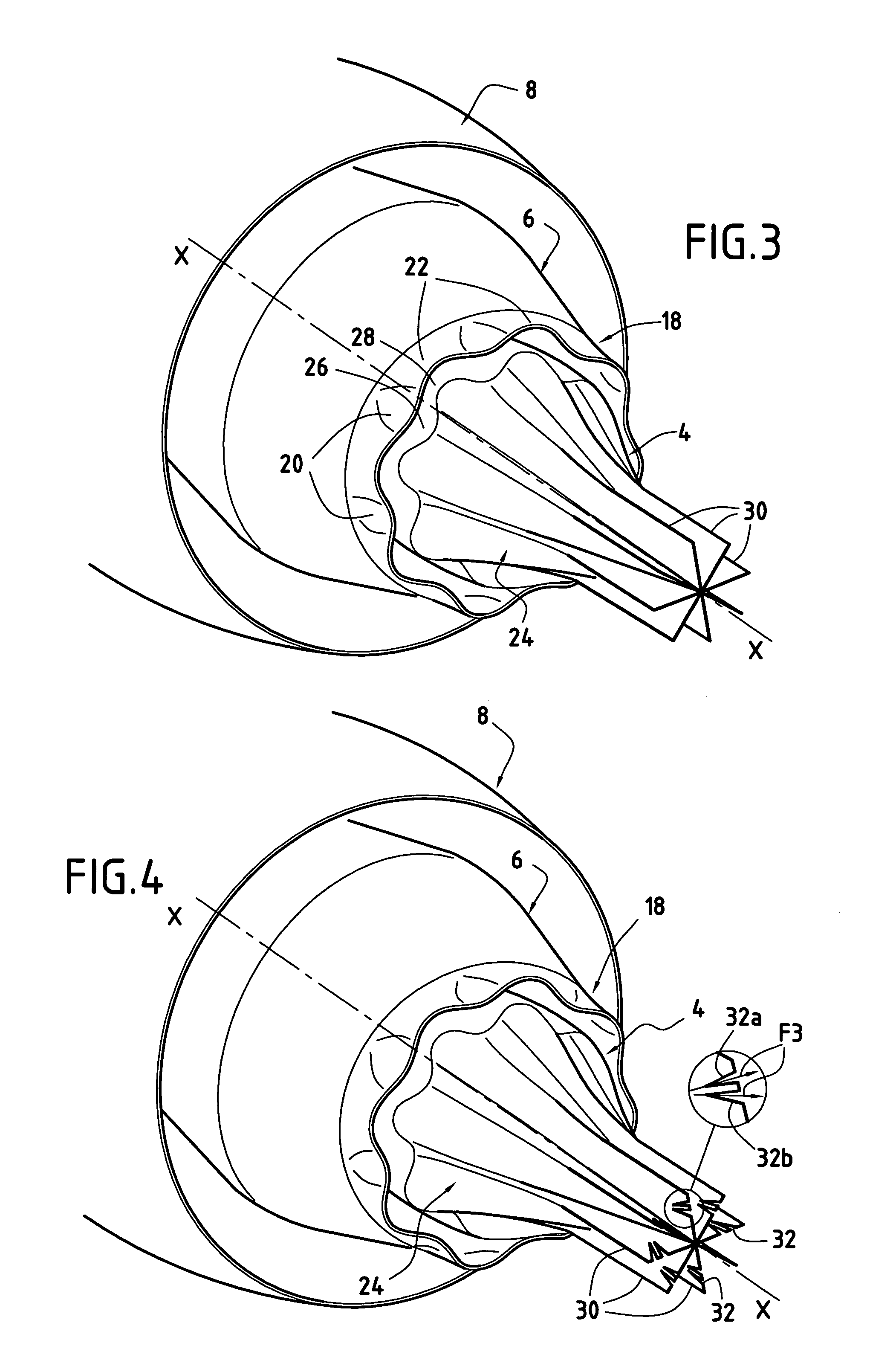Turbomachine nozzle with noise reduction
a technology of turbine nozzle and nozzle head, which is applied in the direction of machines/engines, transportation and packaging, aircraft power plants, etc., can solve the problems of unsatisfactory application of turbine technology to flow at a high subsonic rate, loss of aerodynamic performance, additional parasitic noise, etc., and achieves increased radial shear effect, increased outward deflection of flow, and increased shear
- Summary
- Abstract
- Description
- Claims
- Application Information
AI Technical Summary
Benefits of technology
Problems solved by technology
Method used
Image
Examples
first embodiment
[0026]FIGS. 1, 2A, and 2B show a turbomachine nozzle constituting the invention. As explained above, this nozzle 2 is axially symmetrical in shape about a longitudinal axis X—X, and comprises a centerbody 4, an inner barrel 6, and an outer barrel 8 which are generally cylindrical in shape and are disposed concentrically relative to one another.
[0027]In FIG. 1, references 10 and 12 designate respectively the first annular channel for the primary flow and the second annular channel for the secondary flow of the turbomachine. The centerbody 4 of the nozzle is of the external type, i.e. its trailing edge extends longitudinally beyond a free end 14 of the inner barrel 6. It is terminated by a substantially conical portion 16. Furthermore, the outer barrel 8 of the nozzle shown in FIGS. 1 and 2B does not extend over the full length of the inner barrel 6. Nevertheless, the invention can also be applied to a nozzle in which the outer barrel extends over the entire length of the inner barrel...
PUM
 Login to View More
Login to View More Abstract
Description
Claims
Application Information
 Login to View More
Login to View More - R&D
- Intellectual Property
- Life Sciences
- Materials
- Tech Scout
- Unparalleled Data Quality
- Higher Quality Content
- 60% Fewer Hallucinations
Browse by: Latest US Patents, China's latest patents, Technical Efficacy Thesaurus, Application Domain, Technology Topic, Popular Technical Reports.
© 2025 PatSnap. All rights reserved.Legal|Privacy policy|Modern Slavery Act Transparency Statement|Sitemap|About US| Contact US: help@patsnap.com



